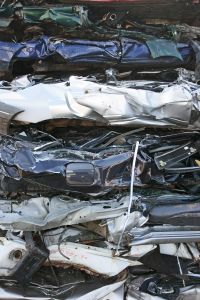According to a recent news article from WWLP, three people suffered injury after being involved in a five-car accident in Springfield. Authorities are still investigating the cause of the accident but believe a wheelchair-accessible van ran into a sedan that was making a left turn. The sedan was pushed into a third car, while the van kept going after the initial collision and hit a forth car. This car crashed into a fifth car after being hit by the van.
 A passenger in the sedan was badly injured and suffered serious cuts on his face. Firefighters had to use the Jaws of Life to cut one passenger from the wreckage, before the passenger was rushed to the hospital, along with one other victim.
A passenger in the sedan was badly injured and suffered serious cuts on his face. Firefighters had to use the Jaws of Life to cut one passenger from the wreckage, before the passenger was rushed to the hospital, along with one other victim.
Our Boston car accident know crashes involving more than two vehicles can involve substantially more litigation than accidents involving two cars. One of the reasons deals with proving who was responsible for each part of the accident. For example, if one car hits a second car while the driver was driving negligently, this is a pretty straightforward car accident. However, if the victim’s car is pushed into a third car after being hit, who is responsible for this accident?
Clearly the driver of the first car is at least partially responsible for both car accidents. The question is whether he or she is responsible for the damage caused to the third car. The first question that must be established is whether damage to the third car was foreseeable. If it was foreseeable that driving in a negligent manner would cause the driver of the first car to hit the second car, and it was foreseeable that hitting the second car would push it into the third car, this may be enough to prove negligence for both accidents.
However, we also need to determine if the second driver was in any way responsible for the accident, as well. This would first require determining if the driver were acting negligent prior to the accident. And example would be following to closely. If it was determined this driver was negligent, we next need to turn to causation.
In terms of causation, the question is whether the accident would have still happened if not for the driver’s negligence. In other words, if the second driver was following too closely, was this the reason he or she hit the third car? If it were determined the accident would have happened even if the second car was at an appropriate safe distance, and it still would have been pushed into the third car, it could be argued there was not causation with respect to the second driver. This would mean the first driver is responsible for 100 percent of both accidents due to his or her negligent conduct.
One of the reasons it may be important to prove multiple drivers are responsible for an accident is so more than one insurance policy limit can be used to satisfy the total loss caused by an accident.
Contact Jeffrey S. Glassman for a free and confidential appointment to discuss your rights. Call 888-367-2900.
More Blog Entries:
Window Tinting, Accident Risks, and Massachusetts Law, Boston Car Accident Lawyer Blog, January 2, 2014
 Boston Car Accident Lawyer Blog
Boston Car Accident Lawyer Blog

